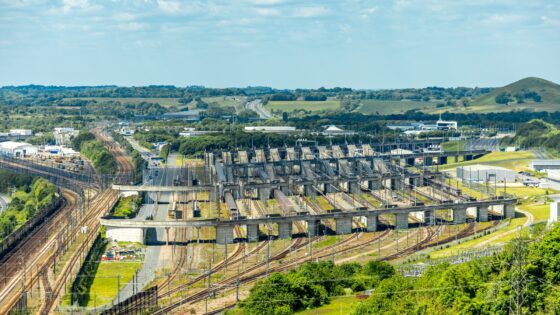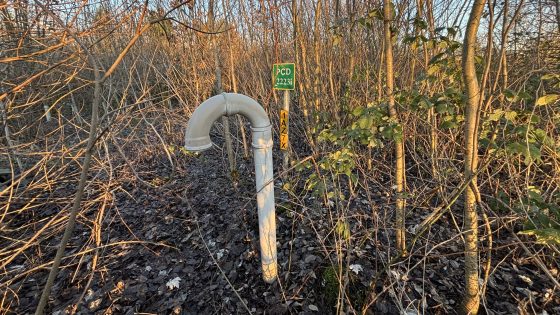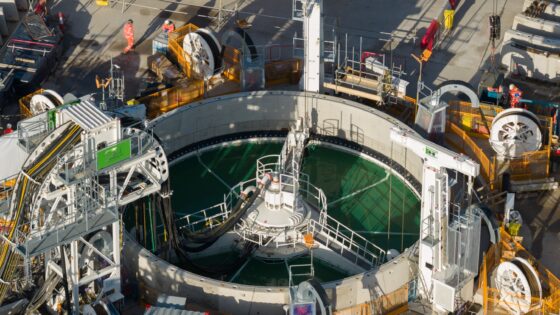Rocchetta Tunnel progress: excavation and programme risk notes for rail engineers
Reviewed by Joe Ashwell
30 Second Briefing
Excavation on the 2.6km Rocchetta Tunnel on the Apice–Hirpinia section of the Naples–Bari high-speed, high-capacity railway has reached a key stage with completion of the first tube’s full-face advance. The contractor, using conventional drill-and-blast with systematic pre-support in variable Apennine geology, is now shifting resources to the second tube while maintaining parallel works on the tunnel invert and final lining. Progress on this mixed-face tunnel will drive programme risk for adjacent cut-and-cover sections, portal stabilisation and trackbed formation.
Technical Brief
- Conventional drill-and-blast is combined with systematic pre-confinement using fibre-reinforced shotcrete and lattice girders.
- Advance sequences are adapted to alternating flysch, marls and fractured Apennine limestones to control overbreak.
- Probe drilling ahead of the face is used routinely to detect karst cavities and adverse groundwater conditions.
- Temporary support classes are adjusted in real time based on convergence monitoring and face-mapping data.
- Invert closure is prioritised in weaker sections to limit deformation and reduce long-term lining loads.
- Portal slopes are stabilised with ground anchors and shotcrete to protect work areas and rail formation.
- Safety management focuses on blast-fume ventilation cycles, evacuation routes and strict access control between tubes.
- Experience with mixed-face behaviour and staged support here will inform risk-based design on future Apennine tunnels.
Our Take
Within the several Infrastructure stories in our coverage, the Rocchetta Tunnel stands out as one of the few underground works tied directly to a high-speed corridor like the Apice–Hirpinia section of the future Naples–Bari railway, which typically brings tighter construction tolerances and more complex interface management than conventional rail upgrades.
Among the 29 tag-matched pieces on Projects and Safety, most focus on surface or station works, so an advancing long tunnel such as Rocchetta is a useful benchmark for how Italian rail schemes are currently handling geotechnical risk controls, ventilation, and emergency egress in confined environments.
For contractors and designers working on the Apice–Hirpinia section, accelerated progress on the Rocchetta Tunnel likely compresses float on adjacent civil packages, which in similar European high-speed rail builds has tended to push more work into off-site prefabrication and night-time possession windows to keep overall programme dates intact.
Prepared by collating external sources, AI-assisted tools, and Geomechanics.io’s proprietary mining database, then reviewed for technical accuracy & edited by our geotechnical team.
Related Articles
Related Industries & Products
Construction
Quality control software for construction companies with material testing, batch tracking, and compliance management.
Mining
Geotechnical software solutions for mining operations including CMRR analysis, hydrogeological testing, and data management.
QCDB-io
Comprehensive quality control database for manufacturing, tunnelling, and civil construction with UCS testing, PSD analysis, and grout mix design management.


